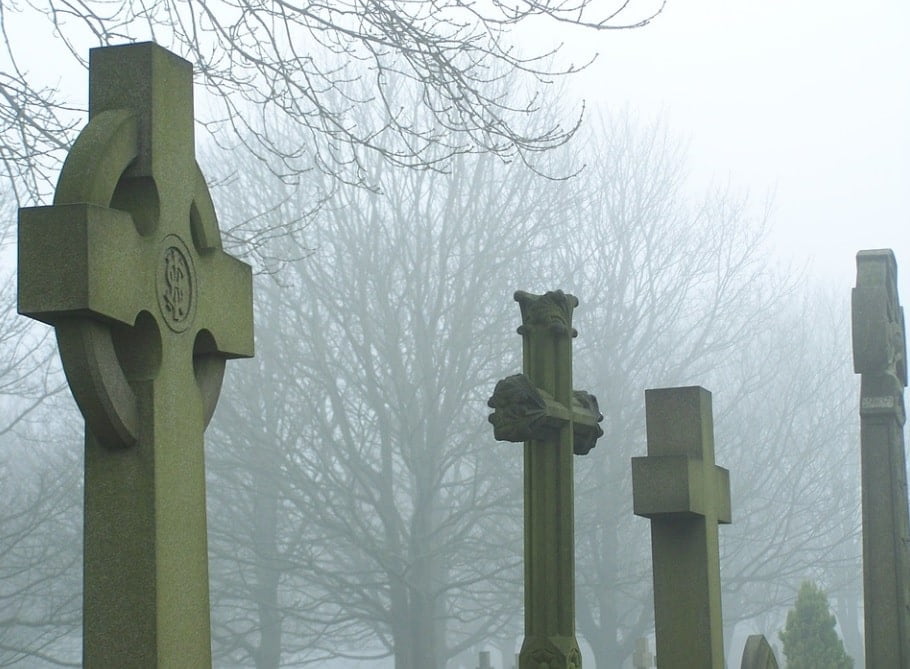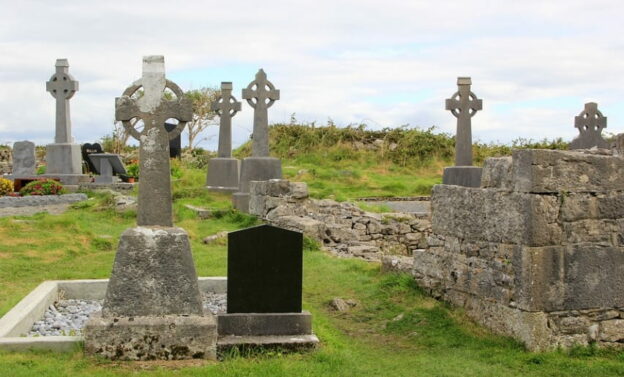Monthly Archives: June 2023

The symbolism of cemetery statuary
When exploring a cemetery, it’s hard not to notice the various statues and sculptures that line the grounds. Cemetery statuary has been used for centuries to memorialize the deceased and provide a sense of peace and comfort for the living. But have you ever wondered about the symbolism behind these figures? Understanding the meanings behind cemetery statuary can provide insight into the beliefs and values of the individuals and cultures they represent. In Huntersville, NC cemeteries such as the Gethsemane Cemetery and Memorial Garden, you can find a range of statues and sculptures that represent different faiths and beliefs. From angels to crosses to animals, each statue has its own unique symbolism and meaning. In this article, we will explore the significance of cemetery statuary and how it has evolved over time.
Understanding the Symbolism of Cemetery Statues
Cemetery statues are much more than mere adornments; they are imbued with symbolism that represents the lives of those who have passed. Understanding the significance of these symbols can help us connect with our ancestors on a deeper level and gain insight into their lives and beliefs.
The most common statue found in cemeteries is the angel, which typically represents the divine messenger between heaven and earth. Angels with trumpets symbolize the call to resurrection, while angels holding a sword or cross represent spiritual warfare. Another common statue is the weeping woman or “Mourning Victory,” which symbolizes grief and the hope of eternal life.
Animal statues also have symbolic meanings, such as the lion, which represents strength and courage, and the lamb, which symbolizes innocence and purity. Trees are also commonly represented in cemetery art, with the oak tree signifying strength, the willow tree symbolizing sorrow and mourning, and the pine tree representing eternal life.
By understanding the symbolism of cemetery statues, we can gain a deeper appreciation for the lives and beliefs of those who came before us.
Artistic and Historical Significance of Cemetery Statues
Cemetery statues have always been an essential aspect of cemeteries. They are an elegant and artistic way to honor the deceased, and many of them have significant historical value. Cemetery statues come in different forms and can be made of various materials such as marble, granite, bronze, and stone. They can represent different emotions such as grief, love, and hope. Some statues are so significant that they have become landmarks and tourist attractions. For instance, the Statue of Liberty at the entrance of the New York Harbor is one of the most iconic and recognizable statues in the world.
Decoding Cemetery Statues: What They Can Tell Us About
Cemetery statues have been a prominent feature in burial grounds for centuries. These statues not only serve as a memorial to the deceased but also hold significant historical and artistic value. Decoding the symbolism of cemetery statues can reveal valuable information about the person buried and their legacy. For example, a statue of a grieving woman might represent the loss of a loved one, while an angel statue symbolizes the idea of the deceased being watched over by a divine entity. Understanding the meanings behind these statues can offer a glimpse into the life of the deceased and the cultural beliefs and values of the time period in which they lived. By exploring the details of cemetery statues and the messages they convey, we can gain a deeper appreciation for the art and history of these iconic monuments.
Conclusion:
In conclusion, exploring the symbolism of cemetery statuary can provide valuable insight into the lives and legacies of the deceased, as well as the artistic and historical significance of these works of art. By understanding the meanings behind different statues and their placement within cemeteries, we can gain a deeper appreciation for the individuals and communities they represent. Whether you’re visiting Huntersville, NC cemeteries or any other cemetery around the world, take the time to observe and contemplate the statuary you encounter. And if you’re looking for a cemetery with rich history and beautiful art, consider visiting Gethsemane Cemetery and Memorial Garden. Its impressive collection of statuary offers a glimpse into the past and a tribute to those who came before us. Call us at (704) 596-5417 to schedule a visit or you can drop by at 1504 W Sugar Creek Rd, Charlotte, NC 28262.

A Guide to Unearthing Family Stories in Ancient Cemeteries
Embarking on a journey to uncover family stories hidden within the quiet corners of ancient cemeteries can be a rewarding and enlightening experience. For many, delving into the past offers a unique opportunity to connect with their ancestors and uncover the rich tapestry of their family’s history. Matthews, NC cemeteries, like Gethsemane Cemetery and Memorial Garden, holds a wealth of information and stories waiting to be discovered by curious descendants. In this informative guide, we will explore the various ways to unearth family stories and the invaluable insights they provide into the lives and experiences of our ancestors.
From deciphering time-worn inscriptions on gravestones to sifting through local historical records and archives, ancient cemeteries offer a treasure trove of untold stories and long-forgotten connections. By engaging in this fascinating pursuit, you will not only learn more about your family’s past but also gain a deeper understanding of the forces that shaped their lives and, ultimately, your own. Join us as we delve into the world of ancient cemeteries and the incredible stories they hold.
Gravestone Inscriptions and Epitaphs
Gravestone inscriptions and epitaphs serve as enduring testaments to the lives of those who have come before us. By carefully examining these time-honored messages, you can glean valuable information about your ancestors, shedding light on their lives, beliefs, and relationships. We will explore how to decipher gravestone inscriptions and epitaphs, unlocking the fascinating stories they hold.
- Understanding Common Symbols and Motifs: Gravestones often feature a range of symbols and motifs that provide insight into the deceased’s religious beliefs, profession, or personal interests. By familiarizing yourself with these common symbols, you can better understand the individual’s life and the values they held dear.
- Reading Between the Lines: Inscriptions and epitaphs may contain abbreviations, archaic language, or phrases that are no longer in use. Researching these terms can help you interpret the intended meaning and gain a clearer picture of your ancestor’s experiences and character.
- Investigating Family Names and Relationships: Gravestones often display surnames, maiden names, or familial connections, providing valuable clues for tracing your family tree. By comparing the information gleaned from gravestones with other genealogical resources, you can piece together your family’s history and discover previously unknown relatives or connections.
By taking the time to decipher gravestone inscriptions and epitaphs, you can unveil the rich narratives that lie hidden within the words and symbols of these lasting memorials. This window into your ancestors’ lives will not only expand your understanding of your family’s history but also foster a deeper connection with the generations that came before you.
Mapping Out Family Connections
Cemeteries are more than just final resting places for our ancestors; they are intricate maps that hold the key to understanding the complex web of family connections. Burial plots and family crypts, in particular, can reveal fascinating information about the relationships between family members, helping to complete the puzzle of your genealogical lineage. The world of burial plots and family crypts, explaining how they can aid in mapping out your family connections.
- Analyzing Burial Plot Arrangements: Family members are often buried close to one another, with spouses and children sharing the same plot. By examining the arrangement of these plots, you can identify familial connections that might not be immediately apparent.
- Exploring Family Crypts: Family crypts are often used to inter multiple generations of a single family. Investigating the inscriptions and dates on the crypts can provide valuable insight into the family structure, lineage, and even their social standing.
- Utilizing Online Cemetery Databases: Databases can also provide additional information, such as obituaries or photographs, which can further enrich your understanding of your ancestors’ lives.
By studying burial plots and family crypts, you can create a detailed map of your family’s connections, piecing together the intricate relationships that have shaped your lineage. This information not only enhances your understanding of your family’s history but also allows you to forge a deeper connection with the generations that came before you.
Harnessing the Power of Local Historical Records
Local historical records and cemetery archives are valuable resources for those seeking to delve into their family’s past. These sources can provide a wealth of information about your ancestors, from their names and birthdates to their occupations and places of residence.
Begin your search by visiting local archives, libraries, and historical societies, which often house extensive collections of records such as census data, property deeds, and probate records. These documents can reveal fascinating details about your ancestors’ lives, helping you piece together their stories and better understand your family history.
Cemetery archives are another essential resource, containing burial records, plot maps, and other pertinent information. By examining these records, you can identify the final resting places of your ancestors, learn about their family connections, and even discover previously unknown relatives.
As you explore historical records and cemetery archives, remember to be patient and thorough. Some records may be difficult to access or decipher, but with persistence and attention to detail, you can successfully unravel your family’s past. This research will not only enrich your understanding of your ancestors but also provide you with a tangible connection to your heritage.
Conclusion
In conclusion, ancient cemeteries, like those found in Huntersville, NC, can reveal captivating family stories. By examining gravestone inscriptions, epitaphs, burial plot arrangements, and statuary symbolism, you can uncover invaluable details about your ancestors and their relationships.
Visiting cemeteries such as Gethsemane Cemetery and Memorial Garden allows you to connect with your heritage and appreciate previous generations. As you explore and learn, you’ll develop a deeper understanding of your roots and identity.
Remember that each cemetery has a wealth of stories awaiting discovery. Approach your research with curiosity and respect, and you’ll find these historical resting places offer profound insights into your ancestors’ lives and experiences.

A Lesson in Crafting Unique Memorials
In commemorating the lives and legacies of our loved ones, memorials serve as powerful symbols of remembrance and respect. Crafting a unique and personalized memorial demands a thoughtful and deliberate approach, centered on the individual’s personality, interests, and beliefs. In this educational article, we will provide valuable insights into designing one-of-a-kind memorials that not only pay tribute to the life of the departed but also offer solace to friends and family. By exploring material choices, integrating meaningful design elements, and utilizing symbolism and inscriptions, we aim to guide you through the process of creating a memorial that captures the essence of your loved one’s story. Gethsemane Cemetery and Memorial Garden, a respected name among Huntersville, NC cemeteries, is committed to offering expert guidance and support, ensuring your loved one’s memorial stands as an enduring and fitting testament to their life.
Different Types of Memorial Materials
Selecting the right material for a memorial is an essential step in crafting a unique and lasting tribute to a departed loved one. Each material offers distinct benefits and aesthetic qualities, making it crucial to carefully consider the options available. The various types of memorial materials, discuss their characteristics, advantages, and suitability for different memorial styles.
Granite is one of the most popular choices for memorial construction due to its durability, beauty, and low maintenance requirements. Available in a wide range of colors, textures, and finishes, granite is suitable for both traditional and contemporary memorials. Its resistance to weathering and erosion makes it an excellent long-lasting option.
Marble is a classic and elegant material, often used for statues, plaques, and headstones. Known for its smooth texture and beautiful veining patterns, marble adds a touch of sophistication to any memorial. However, it is essential to note that marble is more susceptible to weathering than granite, requiring more maintenance to preserve its appearance.
Bronze is a strong and durable material with a rich, warm hue that sets it apart from other memorial materials. Often used for plaques, statues, or as an embellishment on granite or marble headstones, bronze adds a timeless appeal to any memorial. Over time, bronze may develop a natural patina, which can enhance its beauty and character.
Limestone and sandstone are sedimentary rocks, often chosen for their natural, earthy appearance. They are softer materials compared to granite and marble, making them easier to carve and shape into intricate designs. However, these materials are more susceptible to weathering and may require additional maintenance to maintain their appearance.
Glass is a versatile and contemporary material that can be used for a wide range of memorial styles. From colorful stained glass windows to sleek and modern glass panels, this material offers endless design possibilities. Glass can also be engraved or etched with personalized designs or inscriptions, making it an excellent choice for those seeking a truly unique memorial.
Design Elements to Personalize and Honor Your Loved One
When it comes to crafting a memorial for a departed loved one, personalizing the design with meaningful elements can make it a true reflection of their unique story and character. By integrating various design components that resonate with the individual’s personality, interests, and beliefs, you can create a lasting tribute that honors their memory. A range of design elements can be incorporated into memorials to create a personalized and heartfelt homage to your loved one.
Artistic carvings and etchings can add a touch of elegance and depth to a memorial. From intricate floral designs to symbolic representations of hobbies or interests, these artistic elements can help capture the essence of your loved one. Whether you opt for hand-carved designs or laser-etched images, carvings, and etchings can make a memorial truly unique.
Breaking away from traditional memorial shapes can result in a distinctive and personalized tribute. Consider selecting a custom shape or form that holds significance to your loved one’s life, such as a favorite animal, a cherished symbol, or an abstract representation of their passions. Unique shapes and forms can transform a memorial into a meaningful piece of art that stands out in its surroundings.
Symbols and icons can add a layer of meaning and depth to a memorial. Consider incorporating symbols that represent your loved one’s religious beliefs, cultural heritage, or personal interests. Examples of symbols can include crosses, Star of David, Celtic knots, or icons related to hobbies such as music, sports, or gardening. These elements can help create a visual narrative that speaks to the individual’s unique life story.
The color of a memorial can evoke emotions and convey a sense of personality. From the warmth of bronze to the timeless elegance of marble, choosing the right color for your loved one’s memorial can add an extra layer of personalization. Consider selecting a color that reflects their character or holds significance to their life, such as their favorite hue or a shade that symbolizes a particular passion or interest.

The Role of Symbolism and Inscriptions
In crafting a memorial for a departed loved one, symbolism and inscriptions play a significant role in personalizing the tribute and capturing the essence of the individual’s life. By incorporating meaningful symbols and heartfelt inscriptions, a memorial can communicate a deeper connection to the deceased and create a lasting legacy that speaks to their unique story. The importance of symbolism and inscriptions in designing a one-of-a-kind memorial that honors the memory of your loved one.
Symbols can serve as powerful visual representations of a person’s beliefs, values, or passions. By incorporating symbols into a memorial, you can create a unique tribute that speaks to the individual’s character and the things that mattered most to them. Examples of symbolic elements include religious icons, cultural symbols, or emblems representing hobbies or interests. When selecting symbols for a memorial, consider the personal significance they hold and the emotional resonance they may evoke for friends and family.
Inscriptions are an essential component of any memorial, as they provide a space to convey a personal message, commemorate important dates, or share meaningful quotes. Inscriptions can be as simple as the individual’s name and dates of birth and death, or they can include a heartfelt message that captures the essence of their life and the impact they had on those around them. When choosing an inscription, consider the tone, language, and sentiment you wish to convey, as well as the relationship between the text and the memorial’s overall design.
Conclusion:
In conclusion, the process of crafting unique memorials involves a thoughtful approach that combines design elements, materials, and the essence of your loved one’s life story. By incorporating meaningful inscriptions, symbols, and other personal touches, you can create a lasting tribute that speaks to the heart and soul of the individual being commemorated. It is essential to work with experienced professionals who can provide guidance and support throughout the design process, ensuring that the final memorial honors the memory of your loved one in a fitting and meaningful way.
Huntersville, NC cemeteries like Gethsemane Cemetery and Memorial Garden offers a tranquil and beautiful setting where families can come together to create a personalized and enduring memorial for their departed loved ones. By collaborating with skilled designers and artisans, you can craft a tribute that not only reflects the unique qualities of the individual being honored but also provides a source of solace and inspiration for friends and family who visit the memorial site. You can call us at (704) 596-5417 or visit our location at 1504 W Sugar Creek Rd, Charlotte, NC 28262. Remember that the most important aspect of creating a unique memorial is the love and dedication you put into the process, ensuring that the final result is a heartfelt testament to the life and legacy of your loved one.

